
University Politehnica of Bucharest Scientific Bulletin Series B-Chemistry and Materials Science
Scope & Guideline
Innovating Research, Bridging Theory and Application
Introduction
Aims and Scopes
- Chemical Analysis and Environmental Science:
Research involving chemical analysis techniques applied to environmental samples, such as water and soil, focusing on pollutant removal and treatment methods. - Materials Development and Characterization:
Studies on the synthesis, characterization, and application of novel materials, including nanomaterials, composites, and alloys, aimed at improving mechanical and chemical properties. - Biomedical Applications of Materials:
Exploration of materials designed for medical applications, including drug delivery systems, biocompatible materials, and antimicrobial coatings. - Nanotechnology and Advanced Materials:
Research on the synthesis and application of nanomaterials, focusing on their unique properties and potential uses in electronics, healthcare, and environmental remediation. - Sustainable and Eco-Friendly Technologies:
Development of eco-friendly processes and materials, emphasizing recycling, waste management, and sustainable practices in chemical engineering.
Trending and Emerging
- Electrochemical Sensors and Biosensors:
There is a growing emphasis on the development of electrochemical sensors for environmental monitoring and biomedical applications, reflecting advances in nanotechnology and materials science. - Nanomaterials in Drug Delivery and Health Applications:
Research focusing on the use of nanomaterials for drug delivery systems and other biomedical applications is gaining traction, highlighting the integration of materials science with medical research. - Sustainable Materials and Green Chemistry:
An increasing number of studies are dedicated to sustainable materials and green chemistry practices, reflecting a broader societal push towards eco-friendly solutions in various industries. - Advanced Characterization Techniques:
The use of advanced characterization techniques to study materials at the nanoscale is trending, showcasing the journal's commitment to high-quality research and innovative methodologies. - Biopolymer and Biodegradable Materials:
Research on biopolymers and biodegradable materials is on the rise, aligning with global sustainability goals and the development of eco-friendly products and processes.
Declining or Waning
- Traditional Chemical Synthesis Methods:
There has been a noticeable decrease in studies focusing on conventional chemical synthesis methods, as the trend shifts towards greener and more sustainable approaches. - Basic Theoretical Studies:
Research primarily focused on theoretical frameworks without substantial experimental validation seems to be waning, as the journal increasingly favors applied research with practical implications. - Conventional Waste Treatment Techniques:
Research on traditional waste treatment methods appears to be declining, with a shift towards innovative and sustainable approaches that prioritize recycling and resource recovery.
Similar Journals

ACS Materials Letters
Leading the Charge in Materials Research ExcellenceACS Materials Letters is an esteemed peer-reviewed journal published by the American Chemical Society, emphasizing groundbreaking research and advancements in the fields of materials science, biomedical engineering, and chemical engineering. With a robust update and established reputation since its inception in 2019, this journal has rapidly ascended to the top tiers, achieving Q1 rankings in key categories such as Biomedical Engineering, Chemical Engineering (miscellaneous), and Materials Science (miscellaneous) in 2023. The journal boasts impressive Scopus rankings, including #14 in General Chemical Engineering and #19 in Biomedical Engineering, placing it among the elite publications in these domains. While not fully open access, ACS Materials Letters facilitates the dissemination of high-impact research accessible to academics and industry professionals alike. With its comprehensive scope and rigorous selection process, the journal serves as a vital resource for researchers and students eager to stay abreast of the latest innovations and technologies shaping materials science and engineering.

Journal of Optoelectronic and Biomedical Materials
Advancing Innovation in Healthcare TechnologiesJournal of Optoelectronic and Biomedical Materials (ISSN: 2066-0049) is a peer-reviewed academic journal published by the renowned VIRTUAL INSTITUTE OF PHYSICS, dedicated to advancing research in the interdisciplinary fields of optoelectronics and biomedical materials. This journal aims to provide a platform for researchers, professionals, and students to disseminate their findings on innovative materials and technologies that harness optical and electronic properties for biomedical applications. With an increasing significance in medical diagnostics, therapeutic approaches, and advanced materials science, the Journal of Optoelectronic and Biomedical Materials underscores the importance of facilitating collaboration among scientists from diverse fields. While currently operating under a traditional access model, the journal aspires to enhance global accessibility to cutting-edge research contributions that will drive the future of technology in healthcare and biotechnology. As a growing reference point in its domain, it encourages submissions that can advance these crucial scientific areas.

RSC Advances
Connecting Researchers to Transformative IdeasRSC Advances, published by the Royal Society of Chemistry, is a leading open-access journal that has been a prominent platform for cutting-edge research since its inception in 2011. Recognized globally for its rigorous peer-review process, RSC Advances serves the dynamic fields of Chemical Engineering and Chemistry, holding prestigious rankings within the top quartile of academic journals in both areas. With its impact factor reflecting a growing influence, the journal currently occupies the Q1 category in Chemical Engineering and Q2 in Chemistry as of 2023. Researchers and professionals will find RSC Advances an essential resource for innovative studies and applications that advance scientific knowledge. Additionally, as an open access journal since 2017, it affords wider visibility and accessibility to groundbreaking research, fostering collaboration and engagement in the scientific community. Situated in Cambridge, UK, RSC Advances remains committed to its objective of disseminating high-quality research that catalyzes progress across various disciplines.

IRANIAN POLYMER JOURNAL
Connecting Scholars in Chemical Engineering and PolymersWelcome to the Iranian Polymer Journal, an esteemed publication encompassing a rich history since its inception in 1996 and extending its scholarly reach up to 2024. Published by Springer from Switzerland, this journal stands out in the fields of Chemical Engineering, Materials Chemistry, and Polymers and Plastics, proudly holding a Q2 category ranking in each of these disciplines for 2023. With an ISSN of 1026-1265 and an E-ISSN of 1735-5265, the journal serves as a vital resource for researchers, professionals, and students, offering insights into polymer science and interdisciplinary applications. Although not an open-access journal, it presents an invaluable platform for high-quality research dissemination and robust peer-reviewed articles. With Scopus rankings indicating its respected position within the academic community, the Iranian Polymer Journal is committed to advancing knowledge and fostering innovation in polymer-related studies, making it an essential addition to your research library.
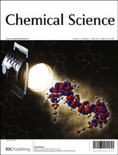
Chemical Science
Catalyzing Breakthroughs in Chemical ScienceChemical Science, published by the esteemed Royal Society of Chemistry, is a leading open-access journal that has been a pivotal platform for disseminating high-quality research in the field of chemistry since its inception in 2010. With an impressive Impact Factor and ranked in the Q1 category of Chemistry (miscellaneous) and holding a distinguished rank of #34 out of 408 in General Chemistry according to Scopus, it is widely recognized for its rigorous peer-review process and innovative contributions to the discipline. The journal embraces a global readership by providing an open-access model since 2015, thereby making vital scientific advancements accessible to researchers, professionals, and students alike. Covering various branches of chemistry, Chemical Science aims to publish original research articles, reviews, and communications that advance our understanding and application of chemical sciences. With its commitment to excellence and its continued relevance in a rapidly evolving field, Chemical Science is an indispensable resource for anyone engaged in chemistry research and education.
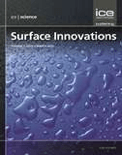
Surface Innovations
Catalyzing Interdisciplinary Collaboration in Surface InnovationsSurface Innovations, an esteemed journal published by Emerald Group Publishing Ltd, serves as a crucial platform for researchers and professionals working within the fields of Materials Chemistry, Process Chemistry and Technology, and Surfaces, Coatings and Films. Launched in 2013, this journal has garnered attention for its commitment to advancing knowledge and innovation, holding a distinguished Q3 ranking in multiple categories as of 2023. With a focus on the latest methodologies and applications in surface science, Surface Innovations not only facilitates the dissemination of cutting-edge research but also encourages interdisciplinary collaboration among scientists and engineers. While not an open-access journal, it offers numerous options for accessibility to engage a wide array of audiences, making it a valuable resource for those looking to expand their understanding and expertise in this rapidly evolving field. The journal's consistent inclusion in high-ranking Scopus categories further underscores its academic impact and relevance.
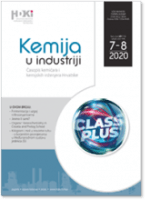
Kemija u Industriji-Journal of Chemists and Chemical Engineers
Unleashing the potential of interdisciplinary chemical research.Kemija u Industriji - Journal of Chemists and Chemical Engineers is an esteemed open-access journal published by the HRVATSKO DRUSTVO KEMJIJSKIH INZENJERA I TEHNOLOGA, dedicated to advancing the field of chemical engineering and chemistry. Since its establishment, this journal has served as a pivotal platform for the dissemination of innovative research, technical development, and interdisciplinary studies within the chemical industry. With its ISSN 0022-9830 and E-ISSN 1334-9090, the journal has established a significant international presence, despite its historical discontinuation from Scopus coverage. Researchers and professionals seeking to contribute to or stay updated on the latest advancements in chemical processes, materials science, and engineering practices will find this journal invaluable. Its commitment to open access since 2004 ensures that knowledge is freely available, enhancing collaboration and learning among students, scientists, and engineers alike. With a legacy that reflects the rich tradition of chemical innovation, Kemija u Industriji continues to be a vital resource, promoting the scientific community's synergy and inspiring future breakthroughs.
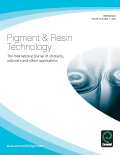
Pigment & Resin Technology
Pioneering Research in Advanced Materials and CoatingsPigment & Resin Technology is an esteemed journal published by Emerald Group Publishing Ltd, focusing on the interdisciplinary fields of materials chemistry and coatings science. With a history spanning from 1972 to 2024, the journal serves as a vital platform for disseminating innovative research and developments concerning pigments, resins, and related materials technologies. Holding a respectable position in the Q3 category for both Materials Chemistry and Surfaces, Coatings, and Films as of 2023, it ranks within the 40th percentile among its peers, underscoring its relevance and impact within these domains. Although it does not currently offer open access, the journal remains a key resource for researchers, professionals, and students aiming to stay abreast of cutting-edge findings and practical applications in materials science. As such, Pigment & Resin Technology is essential reading for those engaged in the innovation and application of advanced materials in various industries.
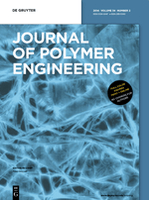
JOURNAL OF POLYMER ENGINEERING
Exploring the Boundaries of Materials Chemistry.JOURNAL OF POLYMER ENGINEERING, published by Walter de Gruyter GmbH, stands as a pivotal platform in the field of polymer science and engineering. With an ISSN of 0334-6447 and an E-ISSN of 2191-0340, this journal has been a vital contributor to the academic landscape since its inception, spanning publications from 1981 to 2024. As a recognized entity in the realms of Chemical Engineering, Materials Chemistry, and Polymers and Plastics, it holds a respectable position in Q3 quartile rankings according to the latest assessments. The journal is positioned to promote the exchange of cutting-edge research findings, technological advancements, and critical reviews that address the complexities of polymer application and innovation. Researchers and professionals will find a wealth of information, from experimental methodologies to theoretical analyses, all designed to inspire and elevate the current understanding of polymer engineering. By fostering collaboration and dissemination of knowledge, the JOURNAL OF POLYMER ENGINEERING remains crucial for advancing research and education in its specialized domains.
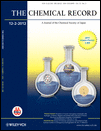
CHEMICAL RECORD
Advancing Chemistry Through Innovative InsightsThe Chemical Record is a prestigious peer-reviewed journal published by WILEY-V C H VERLAG GMBH, focusing on innovative research and developments across the diverse and evolving fields of chemistry and biochemistry. With an esteemed 2023 Impact Factor and recognized as a Q1 journal in several categories—including Biochemistry, Chemical Engineering, and Materials Chemistry—The Chemical Record stands as a critical resource for researchers, professionals, and students aiming to disseminate and acquire knowledge in these disciplines. The journal's engaging scope covers contemporary topics and fosters collaboration within the global scientific community, ensuring accessibility to cutting-edge research. By publishing articles that meet the highest standards of scholarship, it has earned a significant place within the academic ecosystem, as reflected in its strong Scopus rankings. Although The Chemical Record operates without open access, it remains deeply committed to advancing the field of chemistry through rigorous and impactful publications that bridge gaps between theory and practice.